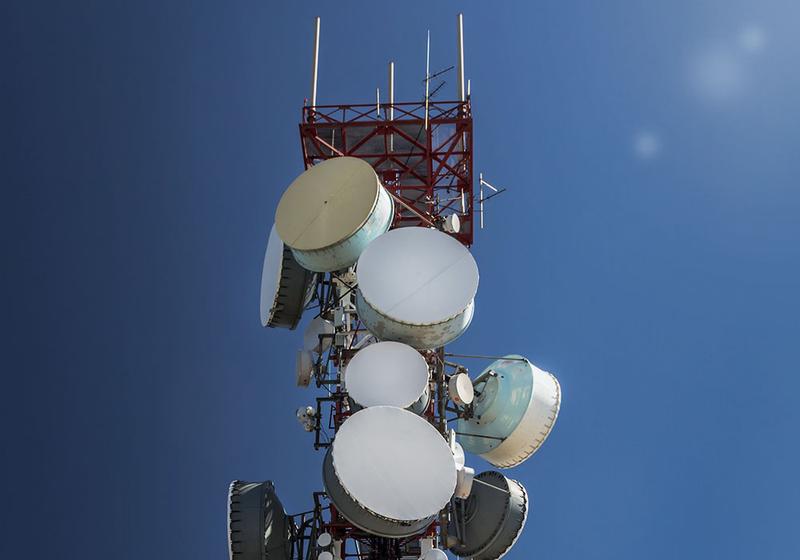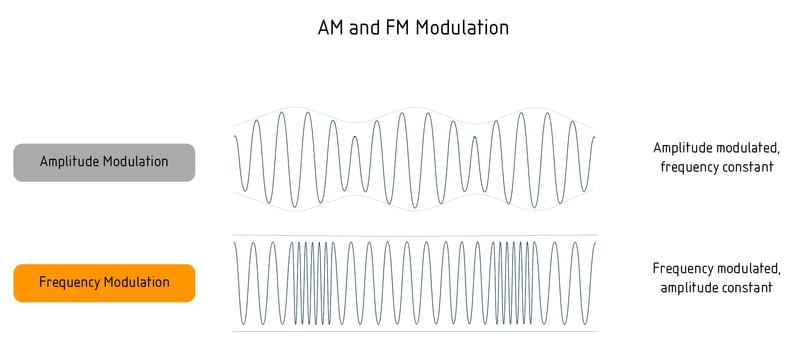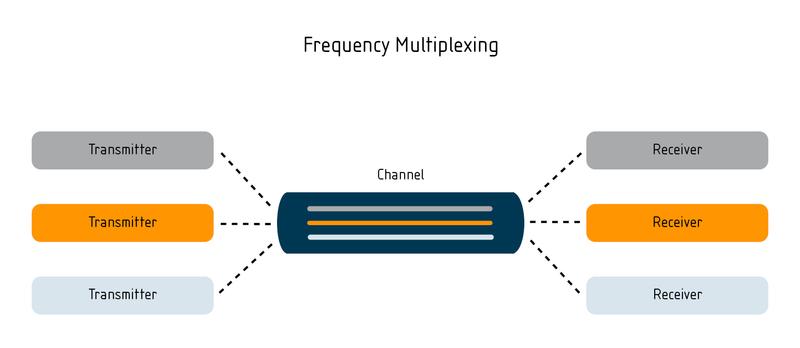
When we turn on a TV or radio device and listen to, for example, the daily news, we are receiving the information broadcast through radio waves.
In a very simplified way, this is possible thanks to TV and radio stations’ technical equipment, which converts video and audio into signals that can travel the air all the way from their antennas to our tuned receivers at home. Our TV and radio devices ultimately decode the signals and we can see or hear the news.
The way information or broadcast signals are transmitted may sound familiar to you: the so-called Amplitude Modulation (AM) and Frequency Modulation (FM) are two ways of broadcasting radio signals. While both transmit them in the form of electromagnetic waves, AM works by modulating the amplitude of the signal according to the information sent and FM varies the frequency of the signal – the amplitude remains constant.

Both types of signals may experience changes in amplitude or wave strength. For this reason, FM transmission has an advantage: small changes in amplitude do not matter. On the other hand, AM can travel longer distances but is more susceptible to interferences due to changes in the amplitude – which causes hissing noises.
The process of transmitting information through radio waves itself is more complex than that, though. Let’s take a closer look at the management process of these radio waves, which contain the information that we consume every day via broadcast media.
In broadcasting, a channel (for example, the BBC 1) refers to a band of radio frequencies equivalent to a wavelength. It can be operated by a TV or radio station after a national authority has granted a license to do so.
A TV or radio station might have to meet specific requirements about how to manage these frequencies. For example, in the United States a TV license defines not only the broadcast frequencies but also the geographic area and the type of programs that the station is allowed to transmit.

Regulating the frequency spectrum is particularly important when it comes to analogue signals because space is limited and there is the possibility of interference. In order to efficiently use a channel, the frequency multiplexing technique allows several users to simultaneously transmit their signals through a single channel.
Rarely does a channel keep the frequency throughout its “life”. There are a range of situations that may require changes to be applied to the channel.
Luckily, most of these situations are only slightly or not at all perceived by the audience. In the event of a reallocation, the audience will barely notice it besides having to re-scan the TV set to receive the channel again while with a channel’s ownership change people might see differences to the content’s format, the information quality or the channel’s name.
Perhaps, the most obvious nuisance is transmission interruptions because during this time no content is transmitted. While the audience might simply switch to another channel, the impact of such an event may be greater for companies that use media monitoring to keep track of business-relevant information sources and ultimately base critical decisions on them.
In case of such unwanted events, a broadcast media monitoring provider who serves international companies with TV and radio content, needs to pay special attention to any changes and react on time to ensure the quality of their service.
Broadcast media monitoring solutions play an important role for the daily business of companies worldwide: from PR companies tracking various accounts for different clients to relevant political figures monitoring key campaign topics, they all depend on a reliable service that keeps any channel-related issues away from them so that they can observe the media without interruptions.
As a leading technology-driven company in the media monitoring industry, eMedia Monitor constantly keeps track of the more than 3,400 channels in 75 countries: reallocation, changes of frequency or stopped transmissions, nothing goes unnoticed.
eMM assigns an ID number to each TV and radio broadcast channel, thus making it possible to identify it along its entire “life” regardless of changes to its commercial name.
With all monitored channels correctly identified, customers can trust that eMM will react reliably to changes and prevent any negative impact on their workflow while using the 24/7 real-time eMM Pegasus platform.
Besides a trustworthy service and keeping all the technical aspects under control for its users, eMM also offers an effective and affordable broadcast media monitoring solution. If you would like to find out more about how the eMM system works and how you can benefit from it, leave us a message:
You might also be interested in:
Open Source Intelligence - Using Freely Available Information
Broadcast Media - The Reliable ones During Crisis
Community Radio: An Accessible Citizen-Developed Information Source